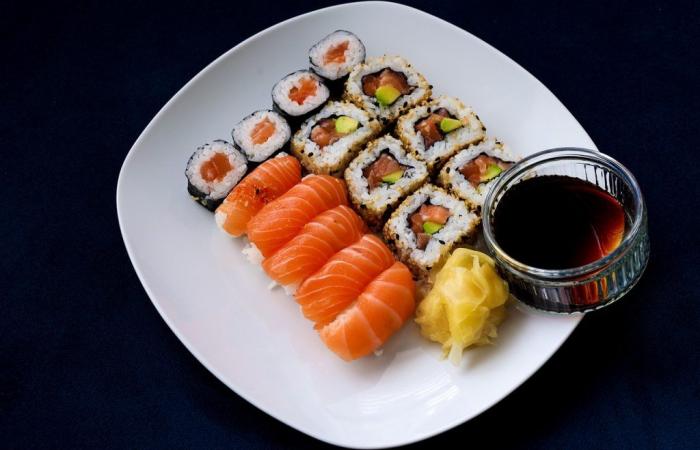
Sushi: perfect combination between the words “su” (vinegar) and “meshi” (rice), an ancient art that has conquered palates all over the world and which is once again celebrated by Gambero Rosso in the new edition of Sushi Guide 2025. A return awaited by all lovers of Japanese cuisine, after the debut in 2021 and the pause in these years of transformation of Japanese restaurants in Italy also due to the Covid-19 pandemic. Between sushi bars, fusion establishments, fine dining, taverns, take-away and delivery, the Gambero Guide interprets this new scenario with a careful selection of the best places to taste the most famous Japanese food in the world: 223 addresses of brands that have invested in quality and innovation, including authentic flavors, but also more modern influences, for an increasingly popular food that continues to attract new consumers.
“In this volume there are many stories of love for Japanese culture, stories of Japanese who wanted to pass on to our country the great gastronomic heritage of which they are witnesses and stories of Italians, struck by the charm of the cuisine of the Land of the Rising Sun. Our selection seeks to highlight experiences of excellence centered around sushi” explains Pina Sozio, editor of the Guide.
The Three Wands
There are 32 excellences which offer the best sushi options throughout the country: the majority are concentrated in Milan, which has always been a city open to international influences and today is the capital of Japanese cuisine in Italy, one of the first cities in our country to have welcomed the first restaurants. Starting from the famous Poporoya sign from which the history of sushi in Milan began in 1989 with chef Hirazawa Minoru, known as Shiro, who slowly managed to overcome the Italians’ reluctance towards a cuisine that was then mysterious. What turns out to be a great surprise, however, are regions such as Puglia and Campania, which are more linked to Mediterranean traditions and which have instead witnessed a significant increase in restaurants offering Japanese specialties in recent years, often reinterpreted with a local touch. Molise is absent.
Puglia
I am four excellences with maximum scores, two in Lecce and two in the province of Bariwhile in the entire region they are 12 insignia who deserved entry into the leadership
- Lecce
- Fugu Restaurant: it is one of the historic venues of the baroque city with a jungle style room where plants, ivy and green armchairs contrast with the wooden parquet. Here the attention to detail goes hand in hand with the authenticity of Japanese and Thai cuisine. The very high quality of the raw materials (many local) meets a sushi purist – Ivan Scrimitore – who has been able to bring the true taste of the Rising Sun to the heart of Salento. He starts with the nigiri (seared salmon, steamed prawn, marinated octopus and smoked mackerel) and the sashimi mix, with its immediate freshness upon tasting. Uramaki, in all their variations, hit the mark with taste: examples are the excellent Salmon out, Bronte and Violet. His fish miso soups and pork broth ramen are excellent. The Thai proposal with wok chicken, beef and prawns is interesting and varied. Extensive wine list, up to par with the rest.
- Fusion: twenty years ago no one in Lecce would have bet that in this point of the city – right in the centre, mind you, a stone’s throw from the city walls and the beautiful Augustinian complex, but still on the internal ring road – a restaurant could be opened, much less successful. But the visionary ability of those who created it made it possible: in the meantime, bringing sushi to cities where raw fish was not even eaten (unlike the rest of Puglia). Instead, that Asian proposal won hearts and palates, remaining a reference over the years. Continuously evolving, in the spaces as in the menu. Three rooms plus a pleasant internal courtyard, the large counter: sashimi, nigiri, maki, ramen and the new, fantastic proposals of chef Giovanni Pellegrino, student of a master like Seiji Yamamoto (Ryugin). Absolutely to try: maki scampi (in&out: scampi blended with rum, avocado and purple potato cream, kombu seaweed, orange zest, puffed chickpeas); black cod, beetroot, smoked herring and lard; pork belly, miso fermented cabbage and ginger. To return several times. Don’t miss Yumi Izakaya, a Japanese restaurant owned by the same owner.
- Nuts (BA)
- Yuki Japanese Cuisine: born in one of the city’s many ice houses (yuki means “snow”), this restaurant stands out for the quality of its raw materials and its respect for authentic Japanese cuisine. The careful installation of bamboo canes on the facade, combined with a clever play of light, makes it a small work of architectural art. Maurizio Tinelli and Andrea Fontana, both students of Hiroiko Shoda, offer seasonal menus in which technique, aesthetics and freshness of the ingredients blend perfectly. And they draw recipes and inspiration from every region of Japan. The Sashimi tasting is unmissable: impeccable cut and authentic taste. Worth trying, in addition to the Omakase menus, to learn about washoku cuisine, when available is the seared red tuna carpaccio marinated with agretti, smoked ponzu sauce and chive oil; the gunkan with Wagyu tartare, honey mustard, white truffle and nikiri sauce. A true discovery of the thousand nuances of simple and complex cuisine. With good vegan choice.
- Terlizzi (BA)
- Frank Sushi Club: a colorful and technological izakaya in the heart of Puglia, created by three young people, Michela La Tegola, Alessandro Rella and the chef Francesco Tempesta. The historic Palazzo Marinelli has become a Japanese corner: in the external gazebo, overlooking the twentieth-century garden, the classic red lanterns flutter above the convivial tables. Among the various internal environments, in the most private room, however, only tables for two and colored lights that surround the exposed “Shinkansen” (bullet train) kitchen. The menu features selected sashimi of tuna, salmon and amberjack, and rolls that vary with the seasons, such as the Ebi Shoga, with fried prawn and beni shoga ginger, lobster mayo and lime. Also worthy of attention are gyoza, ramen and yakisoba, which, in the land or sea variant, follows the concept of comforting soup in the heart of Tokyo. To accompany the meal, a cellar with an Italian flavor and sake references. The cocktails prepared by barlady Giulia D’Anello stand out, with a bitter tendency. Welcoming staff, attentive to allergies and intolerances.
Sponsored Link




